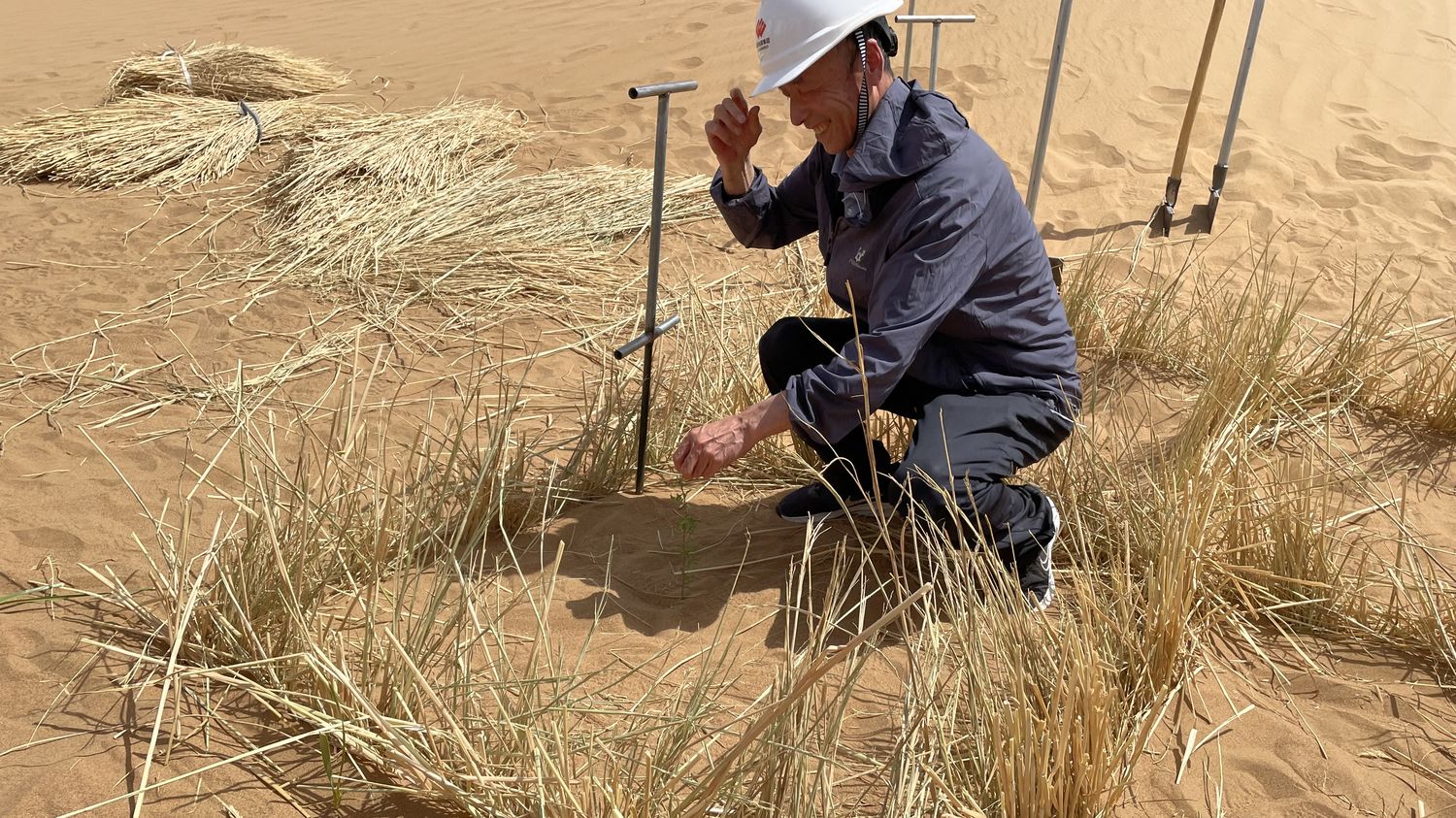It’s David versus Goliath. China is waging a fierce fight against the advance of the desert in the north of the country. Under the effect of climate change, sandstorms are more and more frequent and the desert threatens to engulf inhabited areas.
It is a pharaonic project that the Chinese have launched to lead this battle against what they call “yellow dragons”, these sand dunes which move under the effect of storms and engulf 3,000 km2 of agricultural land each year. and inhabited areas.
In the autonomous province of Ningxia, when you get off the bus in the middle of the Tengri desert, you can hardly see the sand anymore: it is the color black that dominates. We find ourselves in the middle of a gigantic solar park, with solar panels really as far as the eye can see. There are tens of thousands of them. This is obviously used to produce electricity, but above all to slow down the advance of the sand, explains Tang Ximing, one of the managers of this impressive solar forest: “Here we manage the desert on the edge of the city. If the sand advances, it endangers our people, our homes and our land to cultivate. So, we install these solar panels, which measure between 1.5 m and 2 meters high. When the wind blows from the northwest, the solar panel first blocks the wind, which is thus weakened and which comes to die below the panels. In this way, we manage to control the movement of sand , but also to produce solar energy, which gives us an income.”

Further away, Chinese workers work in the middle of the desert. They are burying twigs of straw in the sand. It is a method that the Chinese invented to stabilize the sand and avoid the movements of dunes under the effect of the wind. It’s really painstaking work, on hundreds of thousands of km2 of desert, these workers install the straw in small squares of one meter by one meter. The objective here is to protect the city of Zhongwei with its million inhabitants, which can be seen in the distance and which is directly threatened by sandstorms. More and more, because with the climate changes which cause extreme weather phenomena, the storms are more violent and more regular.
Roll back the desert
Ningxia province is presented as a model in the fight against desertification. An engineer explains to us that in the 1960s, the desert had arrived at the gates of Zhongwei, only six km from the city. Efforts over several years have enabled the sand to recede over 26 km. Without this work, the engineer assures us, Zhongwei would simply have been wiped off the map.
To prevent the progression of the desert, thechina is also continuing its extensive tree planting program. There, the work is carried out at the doors of the desert. It is the famous “great green wall” which has already allowed the planting of 66 billion trees since the 1980s. The inhabitants continue to plant today: in a very small village located about fifty km from the desert of Gobi, two inhabitants explain to us that “everyone must plant shrubs, it is compulsory, they are indispensable. Not only Ningxia plant them, but also nearby Inner Mongolia province. This year, there has been a lot of bad weather with sand , but I’m not worried because the shrubs we planted, which are at eye level, are able to retain the sand, to prevent it from advancing.”

Another adds that “IThe residents started planting shrubs in 2011. The government distributed seedlings and we also bought some ourselves. Some have planted dozens of hectares.”
“We have received government subsidies: 35 euros for a half-hectare plantation, and then six euros a year to take care of the trees. But the plants are very fragile, since the coal mines have been allowed to pump groundwater.”
A villager in Ningxia provinceat franceinfo
And here we can clearly see the limits of this policy: planting trees in semi-desert regions is considered by some to be heresy. Recently, in this village, a farmer caused a sensation on Chinese social networks by publishing a video in which we see him praying and denouncing the neighboring coal mine, which deprives him of water to water his trees.
Mongolia’s inaction
The “great green wall” presented as the miracle solution by the Chinese government therefore does not convince everyone: “The winds have been very strong for two years. There are still sand dunes moving in the distance. It is not easy to plant treessays this other village farmer. They need to be drip-watered to allow them to grow. Here the vegetation, on both sides of the road, was watered, but only half survived. It is not easy. The sand comes from Mongolia, but we can’t do anything, it has to be managed there.”
Neighboring Mongolia is regularly singled out by the Chinese government for its lack of action. This is where storms often form and then descend into China. It is really urgent: this year, a record was broken, with between January and April 12 waves of sandstorms. This is unheard of. The sand is pushed further and further, now including as far as Beijing.
